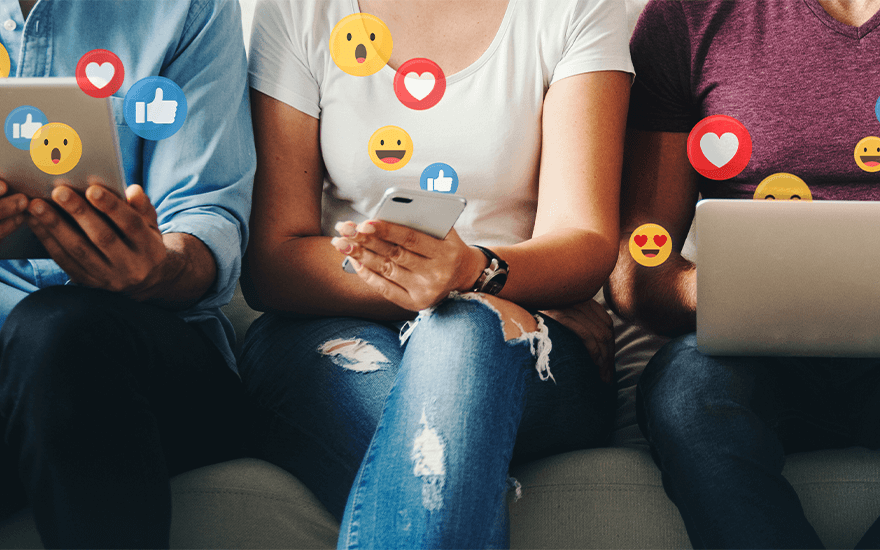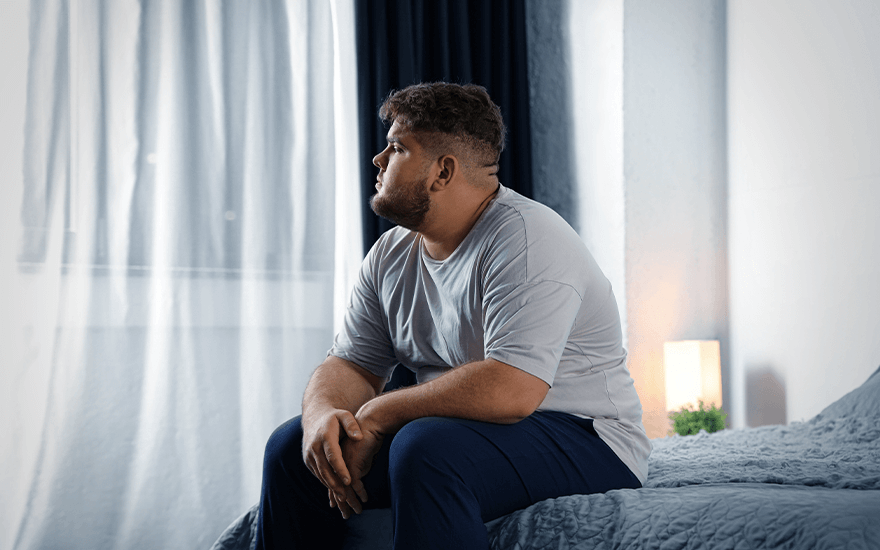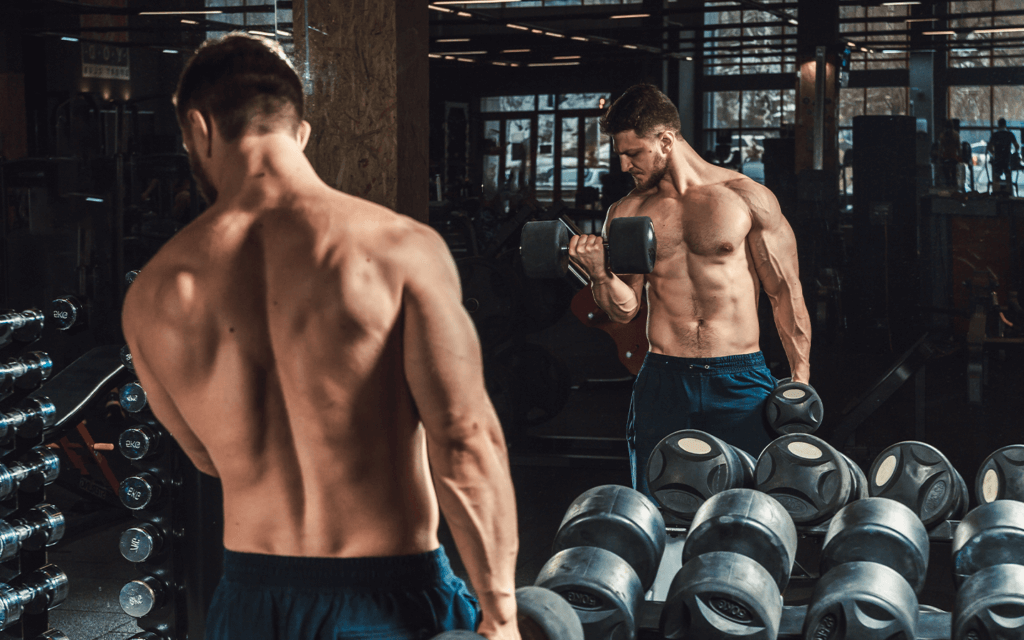“All I see now is imperfection when I look at myself.”
Flex Wheeler might have one of the most impressive physiques of all time, but the 57-year-old, former IFBB professional and four-time winner of the Arnold Classic recently revealed that he’s far from happy with his current body.
“Of course, I’m not [happy with my body]. Other sportsmen, such as basketballers, can still dunk. Actors can still act. But I can’t do anything as far as going back on stage. It’s tough. I even talk to many retired athletes now in my sport, and we all have the same problems. I felt that every step would almost crack the concrete because I was such a force of nature, and now I look quite different. I’m an extreme person, so all I see now is imperfection when I look at myself.”
Wheeler still hits the gym five to six times a week and has an objectively outstanding physique that men half his age envy. But despite this, Flex isn’t content with how he looks today and even exudes a sense of helplessness recounting his competitive years.
It shines a light on the ever-growing issue of male body dysmorphia and leads us to question why it’s so prominent among males, especially bodybuilders.
Related content: Flex Wheeler: Prescription pills put me in a mental institute
Hitting close to home…
I can pinpoint the exact moment I knew there was an issue! The year is 2015, and I had just clocked in a time of 1:35:19 at the Sunderland half marathon. Looking back, I didn’t know just how fast I was, which comes down to the fact that I was light. Some may say beanpole. Lanky. However you want to describe it, my body shape was perfectly tuned for long-distance running.
Gym sessions were exclusively spent on the treadmill, bike and rowing machine. Lung-busting road and trail runs were regular features on the training schedule, followed by an hour of intense football every week. Cardio or bust. Combine this with a pretty low and unorganized calorie intake, and it’s easy to see why I was so slender.
With a body fat percentage under 10%, every single shred of evidence available indicated that I was incredibly lean. Yet, I was convinced I was overweight and ‘fat’ – constantly grabbing my stomach and feeling a sense of guilt when I could grip the skin.
It’s a feeling I’m sure many men can relate to feeling in their life, whether they want to admit it or not.
The turning point…
It wasn’t until I saw a picture of myself bare-chested, did I fully emerge from the fictional reality I had created in my head. With superbly functioning lungs, ribs on show, and barely an ounce of muscle on me, I had been tricking my brain into believing my body was out of shape – when the reality was far different.
I’m not exaggerating when I say I was in the gym the next day, plotting a more weight-focused approach instead of the two-hour cardio sessions I had usually been pushing my way through.
Consistency and confidence came when I started to see results, gradually gaining weight and muscle, but it was years until I could truly see the benefits. It wasn’t until later that I came across the term ‘muscle dysmorphia’, and it struck a chord.
The rise of ‘bigorexia’
While playing this out in reverse, I needed to know more about the idea of male body image.
The discussion on body image and eating disorders often revolves around Women, but it’s of growing concern among males.
Award-winning Plastic and Cosmetic Surgeon Dr. Paul Banwell has witnessed a growth in the number of people, particularly men, coming to see him seeking a particular ‘gym body’ look.
Banwell was one of the first plastic surgeons to have a psychologist practicing alongside him in his clinic. He has referred some of his patients to explore Body Dysmorphic Disorders, including Bigorexia (often referred to as reverse anorexia).
“Body Dysmorphia is a behavioral issue where someone becomes focused on what they perceive as physical flaws. People will spend a lot of time scrutinizing their bodies and seeing them differently from others. It is more common in teenagers and young adults and affects both men and women. Symptoms include worrying about a specific area of your body, spending a lot of time comparing your looks with other people’s, either looking at yourself in a mirror or avoiding them altogether and spending a lot of time trying to hide perceived flaws.”
Muscle dysmorphia is characterized by a preoccupation with a perceived defect in one’s physique that can lead to multiple problems.
It can also lead to drug abuse, prioritizing workouts over time with loved ones and hiding your body. Given body dysmorphic disorder affects between one and 2.5% of the population (with an even gender split), the number of men with muscle dysmorphia worldwide could be millions, predominantly affecting males in their mid-20s to mid-’30s. However, traits and patterns can emerge from the age of 19. None of this is surprising.
If you’re a regular visitor to the gym, you’re likely to have encountered that one guy who seems to have set up permanent residence. The odds are they carry a bag over their shoulder, which slopes their frame to one side. They seek perfection, dedicating most of their time to chiseling every muscle and ironing out minor flaws.
A vending machine of supplements, all different shapes and sizes, is on show once the bag is unzipped. A concoction of pills and powders scatter the landscape, but they know nothing about the contents and effects they boast. If the label promises results, that’s enough.
When you squeeze out your final rep or take your last step following an hour of solid work, you glance over, and that guy is still in attendance. They’ve been in long before you and will still push their body to its extremities as you prepare to wind down. Six to seven sessions per week, all of which could last up to three hours, spent hurtling towards a goal seemingly in touching distance, yet, due to the perception of themselves, is always out of reach.
The role of social media in the rise of bigorexia

But why do we set ourselves these goals of gaining perfection at the expense of our mental health?
Social media is one factor that has contributed to the rise in mental health conditions triggered by body image concerns.
Dr. Beth Bell, who works as a Lecturer in Mental Health and well-being at the University of York, previously studied the impact that online platforms can have on the perception of our bodies.
“I think what’s interesting about things like Instagram is the option and opportunity to edit the images you post heavily. People will add filters and engage in various lighting techniques, almost similar to how the mass media has traditionally manipulated images. What you see on Instagram is ‘everyday people’ manipulating their pictures so they can portray that they have the ideal body. The message perpetuated with this is that the viewer can also have that body and that it’s achievable, despite the fact they are heavily edited. To say that these images on Instagram directly cause conditions such as body and muscle dysmorphia is a little problematic. Still, I think it would be very naive to say they don’t contribute to the overall issue.”
Ask anyone to draw the perfect man; there’s no doubt it would come out looking like Chris Hemsworth with a six-pack, big arms and a chiseled physique. And that can be directly attributed to the portrayal of the male physique in the media landscape – it’s made us believe we need to be large and lean.
Banwell feels part of the problem stems from social media and watching fitness influencers encouraging people to build muscle.
“I think it’s unfortunately all too common for fitness influencers to – sometimes even unintentionally – deceive their audience. Whether they’re using filters to change the shape and look of their bodies and faces, have undergone a range of cosmetic procedures from surgery to tweakments to achieve the look they have or are even distorting their body shape with camera angle tricks when taking photographs. Therefore, we are in a world where we are constantly being bombarded with body image ideals that are not natural or necessarily achievable.”
Upon opening my Instagram, I’m greeted by topless CrossFit athletes with coconuts for shoulders and a workout montage of a super fit, shirtless running guy with the caption ‘EVERY SINGLE DAY’. Consider me motivated.
And like me, men who are into fitness are being targeted by social media algorithms and falling further into the trap of believing their body is the issue – when it’s not.
Jamie Evan Bichelman, an expert in behavioral health and exercise physiology, has suffered from lifelong major depression, obsessive-compulsive disorder and anxiety. He believes body dysmorphia traps men in a vicious cycle of hatred and shame that further impacts their physical well-being.
Bichelman points to social media as one of the root causes.
“From the bombardment of perfectly curated bodies that are better than yours shoved into our faces via Instagram and TikTok, to actors or other public figures utilizing steroids in a largely unregulated industry, we’re experiencing a social media-driven epidemic with short – and long-term, far-reaching implications. And influencers with fitness programs to sell, with dubious credentials and their own trademarked “methods” certified by no one, prey on this fact. We’ve historically seen women’s bodies criticized for being too much of this, too little of that, and held to literally unattainable standards. Men are similarly now judging themselves, silently and privately, to nearly-unattainable standards and are often undiagnosed despite their immense suffering. In this real-life hellscape, no one wins but the scammer.”
How to overcome muscle dysmorphia…

It’s a never-ending pursuit. Even when the summit is reached, every muscle is pumped, each vein is visible, all six packs are popping, and the body fat is in single figures. It won’t be enough. And by the time it is enough, the goalposts for the perfect male body will have changed.
That’s why speaking about what is a silent epidemic is crucial, with as many as 10% of males working out in gyms likely to be suffering but never seeking help.
Samantha Ward is a Fitness Assistant and Trainer at the European American Supplement Sciences. She believes there are “a number of steps that can be taken to overcome muscle dysmorphia.”
“Firstly, getting help from a therapist or counselor is important. This can help to address the underlying issues that are causing the dysmorphia. Secondly, it is important to have a healthy and balanced diet and to exercise in a sustainable and healthy way.”
Ward also thinks it’s vitally “important to be accepting and forgiving of oneself” and that it’s “okay to have body flaws” as “everyone has them.” Finally, she believes “it is important to be around positive and supportive people who will accept and love you for who you are.”
California-based health expert and contributor to The Consumer Mag, Mark Lewis, emphasizes the importance of educating yourself to seek control of the condition.
“Learn as much as possible about the condition, including its causes, symptoms, treatments, and management strategies. This can help you feel empowered to actively participate in your health care.”
He also stresses the need to “break down goals into smaller, achievable steps”, as this can “help to stay motivated and make progress towards your overall health and wellness.”
In a world where judgment is profound and the lines between reality and fake in the fitness universe are skewed, this reminds you to be kinder to yourself and remember that balance is key. Yes, goals are essential. Yes, looking good makes you feel better about yourself. But rest days are also valuable to recovery and performance. Spending time away from social media is good for the mind.
Am I happy with my body as it is now?

It all comes back to the question we asked Flex in his interview with Muscle and Health. And the answer – much like his – is no.
But I also recognize how I feel. Just because I don’t necessarily have the perfect physique doesn’t mean I don’t have MY perfect physique. Appearance isn’t everything and learning to understand that is still ongoing. I’m still learning to be comfortable, but I’ve come a long way from the skinny young lad who thought he was obese.
Oh, and the next time you look in the mirror, remember to smile at the person looking back.
With thanks to:
Dr Paul Banwell – https://www.paulebanwell.com/
Samanatha Ward
Mark Lewis
Jamie Evan Bichelman
Related Articles
Male Gynecomastia: Everything You Need To Know About Man Boobs(
Answering Your Burning Questions on Male Thrush






